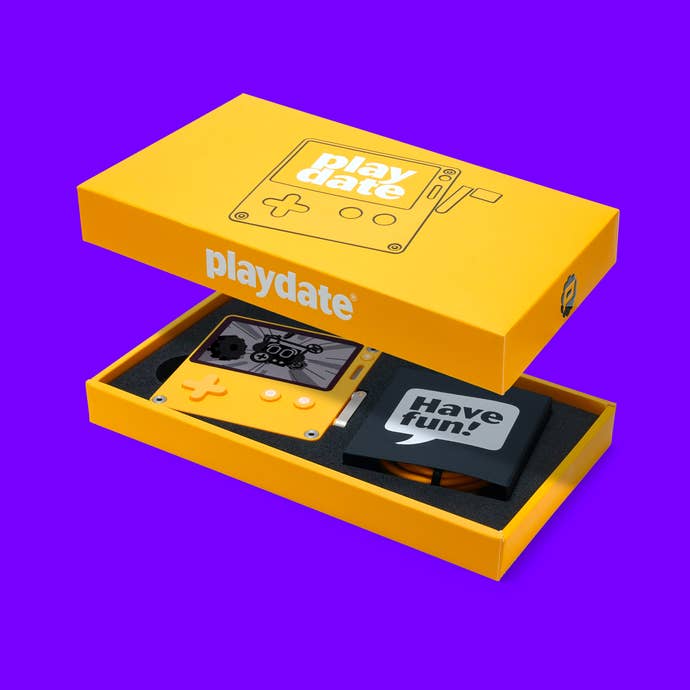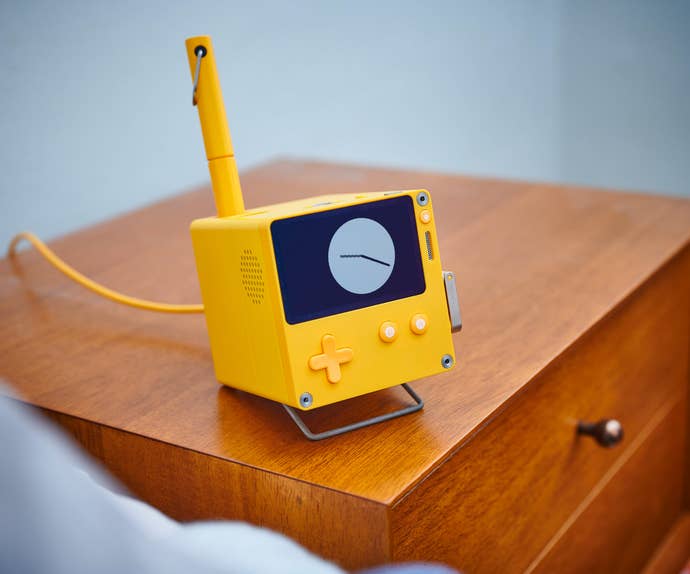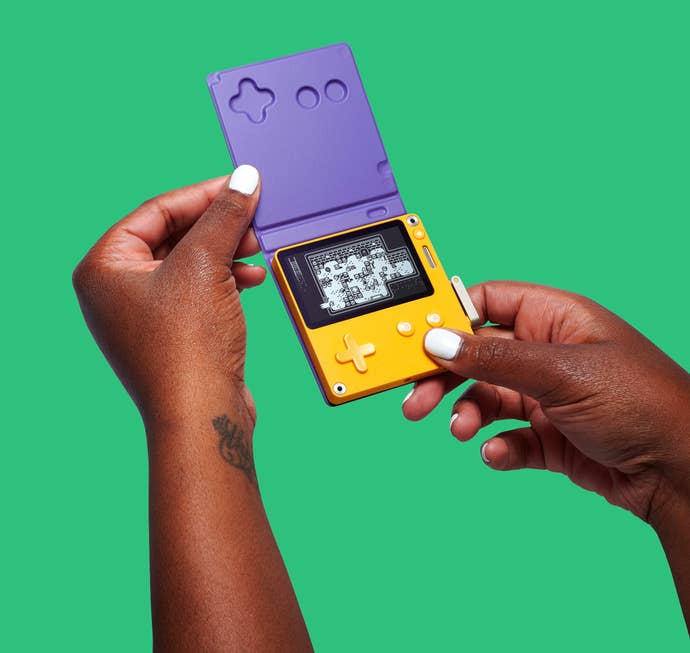Playdate first impressions – Quirky on the outside, not so much on the inside
Panic's curious little console is certainly charming, but is that enough to entertain an old crank like me?
I’m not sure I’ve experienced such a quirky device since my days playing on a Barcode Battler in a small caravan at Butlins in the 90s. Playdate, a much-smaller-than-I-expected custard yellow handheld games device gained quite a following after its reveal. It’s easy to see why. It’s cute, it’s novel, it has a modern sleekness with a retro vibe, some top indie talent are making games for it, and it was the cover star of UK games media print press darling, EDGE. But after the wait for it to arrive, is it actually fun to use?
To cut to the chase, avoiding a lead up for many clever and wit-infused words: sometimes. Inevitably, how much fun you’re going to derive from the Playdate depends on how you find the 24 games that are included in Season One. And this is where things get a bit unfortunately negative. But first, some more about the Playdate’s quirkiness.
It’s got a crank. Undock the yellow handle from the slot on the handheld’s lower right side, swivel it a bit, and you can rotate a crank like people did on game shows, like the Crystal Maze, or in Medieval times for reasons I can’t quite put my finger on (but were probably ghastly). I think most people lasered in on this crank as what was going to give Playdate a unique line-up of games. “Just what can the best game dev talent create now they have a turning stick to play with?” we all thought. We’ll come to that.

Next up, as I mentioned, the Playdate is small. Here’s a photo of it next to my iPad’s small plug adapter. See, it’s very small. Sort of to the point that it’s not the most comfortable thing to hold for long periods of time. The screen therefore is also small, and it’s 1-bit, black and white. That’s fine, of course – plenty of brilliant games existed before we had amazing colour in games. I started playing games on a greenscreen Amstrad. What's not so cool is how I struggled to see the screen properly in low light, such as a bedroom with just a side table lamp turned on.

The final quirk is one that I actually love. Those 24 games you get included in the cost of the handheld, they are delivered two a week for 12 weeks. In theory, if 10,000 people get a Playdate on the same day, they’ll experience the games at the same time as each other, which is nice. It also encourages you to give each game a go, rather than discarding each one after a few moments in an attempt to see everything as quickly as possible. So yeah, the Playdate is quirky and very easy to love because of it.
I deliberately ignored all the press material sent about the games included in Season One, so digitally unwrapping each new game delivered a genuine thrill of discovery, the likes of which I don’t remember having since the days of random Mega Drive (Genesis) game rentals from Blockbuster. I know pretty much what to expect with everything these days (which is partly a side-effect of the job and partly down to excessive marketing and promotion), so to get these mini games that could be absolutely anything was a real highlight.

And yet, my love of the Playdate is waning. For all the things I find charming about this handheld, I can’t help but feel disappointed by a big chunk of the game library. Maybe it’s my expectations that need to take a step back, or the fact that I’m yet to play each game for as long as I’d like, but of the 12 games I’ve played so far, only one has stood out as a game I’d wholly recommend to others. That game is Crankin Presents Time Travel Adventures.
A robot man wakes to find himself running late for a date. You must then spin the crank to whiz Mr Robot Man through a level to reach his destination, usually late and to the ire of his date – but you must avoid obstacles or it’s Game Over. The twist is that you can reverse the crank to send our robo pal backwards while the other inhabitants of the world continue on as normal. I became lowkey obsessed with this for a while, timing my cranking in order to smell flowers as darts flew over my head, leaping onto tables as wild boars ran amok, and leaping onto bars to let thing pass through an elongated midsection.
Time Travel Adventures works for me where others don’t because it has a single core gimmick, sticks with it, and does as much as it can with it – and that’s the game. Other games I’ve sampled so far are a bit text-heavy or use the crank in a way that doesn't feel necessary. Time Travel Adventures is what I expected to be playing. A game that’s as quirky as the quirks that define the console.

I’m reserving final judgement on Playdate as, to be honest, I went on holiday and didn’t have time to test everything as much as I’d have liked. There’s clearly something here. In the sense of discovery, the feel of something fresh and new, and in the gimmicky glee of Time Travel Adventures. I hope I can say I get to experience more of that as my time with the handheld increases.


